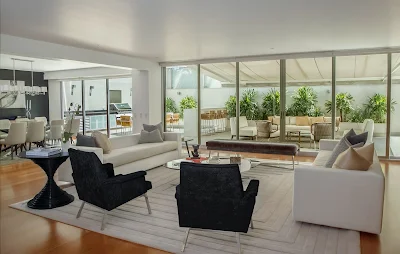Biophilic Design: Bringing Nature into Your Living Spaces
BlogkoopediaA
s our lives become increasingly busy and technology-driven, it's easy to feel disconnected from nature. Biophilic design is a philosophy that aims to address this by incorporating natural elements into the design of our living spaces. The goal is to create environments that promote health, happiness, and wellbeing by connecting us with the natural world.What is Biophilic Design?
Biophilic design is a concept that has been around for several decades, but it has gained popularity in recent years as more people become aware of the benefits of being in nature. It's a design philosophy that emphasizes our innate connection to the natural world and seeks to integrate natural elements into our built environment.
The term "biophilia" was first introduced by the biologist E.O. Wilson in the 1980s. He defined it as "the innate human attraction to nature and natural processes." Biophilic design builds on this concept by creating spaces that incorporate natural elements such as plants, water, and natural light.
Benefits of Biophilic Design
Research has shown that biophilic design has many benefits for our health and wellbeing. For example:
- Stress Reduction: Exposure to nature has been shown to reduce stress levels and promote feelings of calm and relaxation.
- Improved Cognitive Function: Studies have found that being in nature or even just looking at natural scenes can improve cognitive function, including attention and memory.
- Increased Creativity: Being in natural environments has been shown to enhance creativity and problem-solving skills.
- Better Air Quality: Plants can help purify the air in our homes, reducing the amount of indoor air pollutants.
How to Incorporate Biophilic Design into Your Home?
There are many ways to incorporate biophilic design into your home, regardless of your budget or living space. Here are a few ideas:
- Add Plants: Adding plants to your living space is a simple and affordable way to bring nature indoors. Choose plants that are easy to care for and fit the lighting conditions of your home.
- Use Natural Materials: Incorporating natural materials such as wood, stone, and natural fibers into your home's design can help create a more organic and calming environment.
- Let in Natural Light: Maximizing natural light in your home can help create a connection with the outdoors and promote feelings of wellbeing.
- Include Water Features: Adding a water feature, such as a fountain or small pond, can help create a sense of calm and tranquility.
Conclusion
Biophilic design is a powerful tool that can help us connect with nature and improve our overall health and wellbeing. By incorporating natural elements into our living spaces, we can create environments that promote relaxation, creativity, and productivity. Whether you're a homeowner or a designer, consider incorporating biophilic design principles into your next project to create a space that's not just beautiful, but also promotes health and happiness.


.jpg)















No comments:
Tulis comments